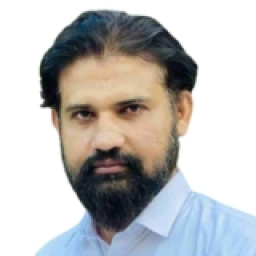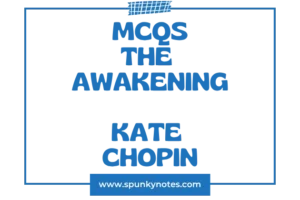

Estimated Reading Time: 17 min
The Unnamable MCQs
1. The narrator begins the novel by asking which three immediate questions?
A. Where, when, how now?
B. Why, how, what now?
C. What, where, when now?
D. Who, where, when now?
2. The narrator mentions proceeding in his discourse by a simple reliance on what concept?
A. Clear negations
B. Pure simple aporia
C. Strong affirmations
D. Known hypotheses
3. What critical action regarding discourse does the narrator promise he will never execute?
A. Never speak lies
B. Never stay still
C. Never be silent
D. Never assent
4. The narrator anticipates that he will initially have company in the form of what figures?
A. A few puppets
B. Some old friends
C. Many dark shapes
D. Silent family members
5. Which specific character is described as passing before the narrator at regular intervals?
A. Molloy
B. Murphy
C. Malone
D. Basil
6. What is the conclusive physical attribute that helps the narrator identify Malone?
A. A long beard
B. A wide greatcoat
C. A brimless hat
D. Two large hands
7. The narrator hypothesizes the figure might be Molloy wearing the hat of which other character?
A. Murphy
B. Basil
C. Malone
D. Worm
8. The narrator holds the belief that all the previous characters are located where?
A. Outside this place
B. Here forever
C. In deeper pits
D. Elsewhere now
9. The narrator describes his fixed position as sitting and gazing like what specific kind of bird?
A. Great barn-owl
B. Flitting small bird
C. Dark restless crow
D. Silent watchful eagle
10. Although nothing saddens him, the narrator conjectures his constant tears might be what substance?
A. Liquefied brain
B. Pure distilled salt
C. Remorseful acid
D. Memory of pain
11. The appearances and disappearances of Malone occur with the regularity of what mechanism?
A. A striking pendulum
B. The tide’s flow
C. The sun’s rising
D. Clockwork
12. The lights in the narrator’s location are characterized by which chief quality?
A. Shining constantly
B. Truly unpredictable
C. Burning steadily
D. Illuminating greatly
13. The narrator finds it most pleasing to think of himself as located where in the space?
A. Between points
B. At the circumference
C. At the centre
D. In perpetual motion
14. To assure himself he is not deaf, the narrator cites the sporadic occurrence of what?
A. Incessant speaking
B. Sudden movement
C. Faint fires
D. Sounds that reach
15. What specific initial incident did the narrator witness involving two shapes “oblong like man”?
A. Collision and fall
B. Mutual embrace
C. Passing each other
D. Silent procession
16. What prevents the narrator from having an unobstructed view of what happens?
A. The dark liquid
B. His constant fear
C. Fixed staring eyes
D. His head’s stiffness
17. The narrator’s delegates were primarily responsible for informing him about what two things?
A. Men and day
B. Love and silence
C. Sin and evil
D. Depth and height
18. Who is the figure who filled the narrator with hatred and tried to change him by glaring at him?
A. Molloy
B. Mahood
C. Basil
D. Mercier
19. What physical attribute of “the other” is described as being worn through like an old boot sole?
A. His single crutch
B. His coat sleeve
C. His strange beard
D. His hat crown
20. The narrator notes that his fixed body is incapable of making what kind of movement?
A. Raising his hand
B. Shuddering in fear
C. Weeping loudly
D. Breathing deeply
21. What metaphorical color is needed first for the narrator to proceed?
A. Rose-red
B. Deep black
C. Grey
D. Bright white
22. After dismissing his ‘creatures’, the narrator realizes he exists only with himself and what surrounding state?
A. A vast ocean
B. This black void
C. Incessant light
D. Constant noise
23. The narrator describes his head as lacking features except for the eyes, making it resemble what shape?
A. A featureless ball
B. A small cylinder
C. A cracked vessel
D. A misshapen egg
24. The narrator eventually confirms that his ideal physical form is fundamentally what?
A. Round and hard
B. Large and soft
C. Flat and formless
D. Tiny and invisible
25. When the narrator describes the voice that speaks, he claims it clamours against what structure?
A. The dark void
B. My silent ear
C. My inner soul
D. My walls
26. The narrator confusingly claims that the search for the means to end speech is what enables the discourse to do what?
A. Finally cease
B. Continue
C. Become truthful
D. Fail utterly
27. What does the narrator ultimately confess he confused his required “pensum” (task) with?
A. His master’s wish
B. His old lesson
C. His memories
D. His failures
28. What is the implied reward or outcome for the narrator if he successfully discharges his pensum?
A. Acquitted and pardoned
B. New life elsewhere
C. Wealth and happiness
D. Meeting his master
29. The narrator states that the belief in a pensum to be performed before he can rest is fundamentally what kind of notion?
A. Eminently open to suspicion
B. Necessary for salvation
C. Logical and helpful
D. Terrible but true
30. The narrator ultimately concludes that the entire concept of having a task (pensum) to accomplish was what?
A. All invented lies
B. A partial reality
C. The master’s command
D. A sudden insight
31. The narrator determines that his next designated ‘vice-exister’ after Mahood will be called what?
A. The Other
B. Billy in bowl
C. Molloy again
D. The cripple
32. Mahood’s physical description includes the distinct characteristic of him missing which major limb?
A. An entire arm
B. A single leg
C. Both hands
D. Both eyes
33. What specific foodstuff is credited by Mahood with killing the narrator’s entire family?
A. Rotting vegetables
B. Corned-beef
C. Sausage-poisoning
D. Old dried fish
34. What ritualistic phrase did the narrator’s family always repeat concerning his youth?
A. He was a good one
B. Still a fine baby
C. Never fully grown
D. Always loved him
35. As Mahood, the narrator, was entirely absorbed in the mechanical problem of doing what?
A. Reaching the house
B. Continuing his motion
C. Stopping his thoughts
D. Avoiding obstacles
36. The street where Mahood was situated was chosen due to its proximity to what type of business?
A. A large market
B. The shambles
C. The ocean shore
D. A churchyard
37. Who was the only person mentioned who regularly performed the duty of emptying Mahood’s receptacle?
A. The police officer
B. A passing priest
C. The chop-house owner
D. A kind vagrant
38. The proprietress festooned Mahood’s jar with what colorful decorations?
A. Red paper bows
B. Chinese lanterns
C. Silk banners
D. Christmas lights
39. Mahood served as a kind of landmark or what for the chop-house establishment?
A. Hidden shame
B. Good omen
C. Advertisement
D. Silent witness
40. To raise Mahood higher in the jar, the proprietress filled the bottom with what material?
A. Old clothes
B. Garden soil
C. Fresh sawdust
D. Broken bricks
41. The narrator describes his ability to retract his head due to a stiff neck, a movement that the woman attempted to block with what addition?
A. A tight collar
B. Heavy chains
C. A spiked lid
D. An iron grate
42. The narrator renames his old friend Basil with what new prèferred name?
A. Molloy
B. Worm
C. Mahood
D. Murphy
43. The narrator states he has nothing to do, but he is obliged to do what action regardless?
A. To speak
B. To remain fixed
C. To go silent
D. To find hope
44. After Mahood’s story ends, whose voice does the narrator say he begins to hear?
A. Worm’s voice
B. His own true voice
C. The master’s voice
D. Molloy’s new voice
45. What key factor is Worm said not to know about his own existence?
A. How to move
B. That he is loved
C. That there is anything to know
D. What his name is
46. Worm’s only suffering (before his nature is corrupted) derives from what single source?
A. The black void
B. The continuous noise
C. The bright light
D. His fixed position
47. The narrator says his existence is composed of words belonging primarily to whom?
A. Himself alone
B. His tormentors
C. Others
D. The silent master
48. The narrator employs a metaphor where he is the division between what two metaphysical concepts?
A. The air and the earth
B. The mind and the world
C. The time and the space
D. The inside and outside
49. The narrator suggests that if he could remember something by heart, he would be what?
A. Completely free
B. Safe and saved
C. Fully understood
D. Able to change
50. The narrator summarizes his life’s condition using a trio of ‘inabilities’ centered on what?
A. Speaking, silence, solitude
B. Moving, seeing, hearing
C. Knowing, feeling, wishing
D. Loving, hating, resting
Brief Overview
The Unnamable is a novel by Samuel Beckett, first published in French in 1953. It is a seminal work of existentialist and absurdist literature. The novel profoundly questions themes of identity, existence, language, and the inescapable burden of human consciousness.
The core of the novel is a speaker, referred to only as “I,” who is trapped in an undefined, dark or grey setting. The central compulsion is that the speaker must speak and “go on” speaking, yet they lack any understanding of who they are, where they are, or the reason for their monologue. The narrator states they are essentially “made of words,” and those words are often merely “others’ words.”
The narrator initially tells many stories about other characters, such as Murphy, Molloy, and Malone. They refer to these figures as “puppets” or “delegates.” The speaker later determines that these previous tales are “all lies” and attempts to stop them from speaking about their authentic selves.
The speaker tries to limit their speech only to themselves and the “black void” surrounding them. They also discuss a silent, passive creature called Worm, who knows nothing. The ultimate, unattainable goal is to find peace, silence, or to cease speaking entirely.
The speaker admits they are stuck in the exact spot where they always were. The voice often fails or goes silent for a while. The novel concludes with the famous, paradoxical struggle that defines the text: “I can’t go on. I’ll go on.”


